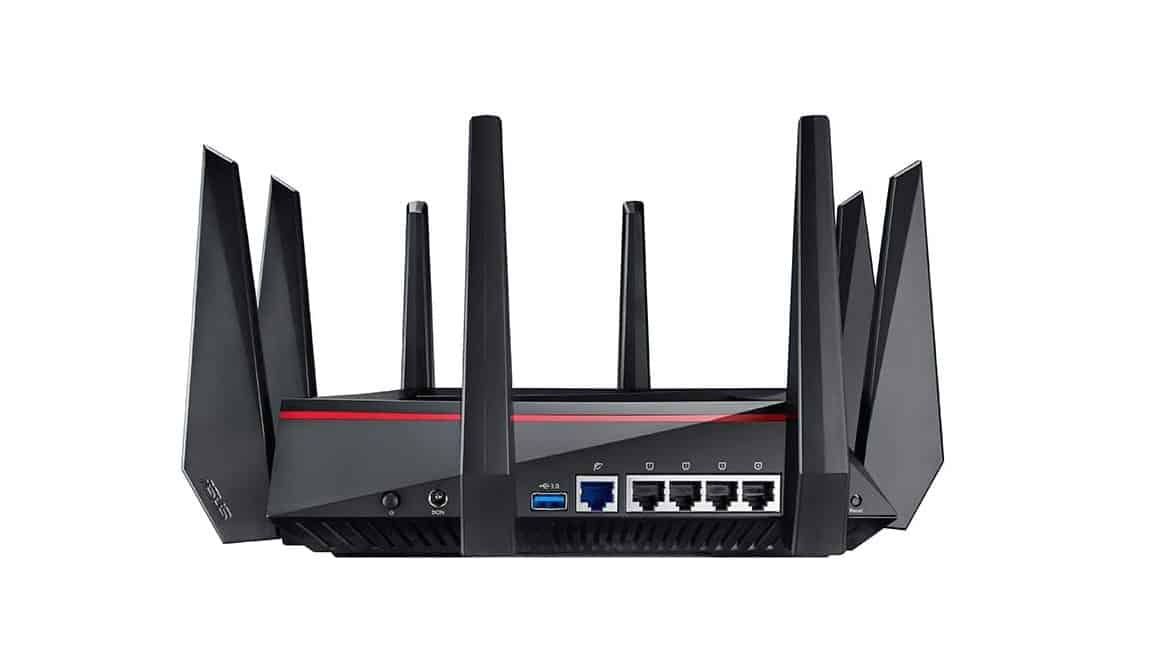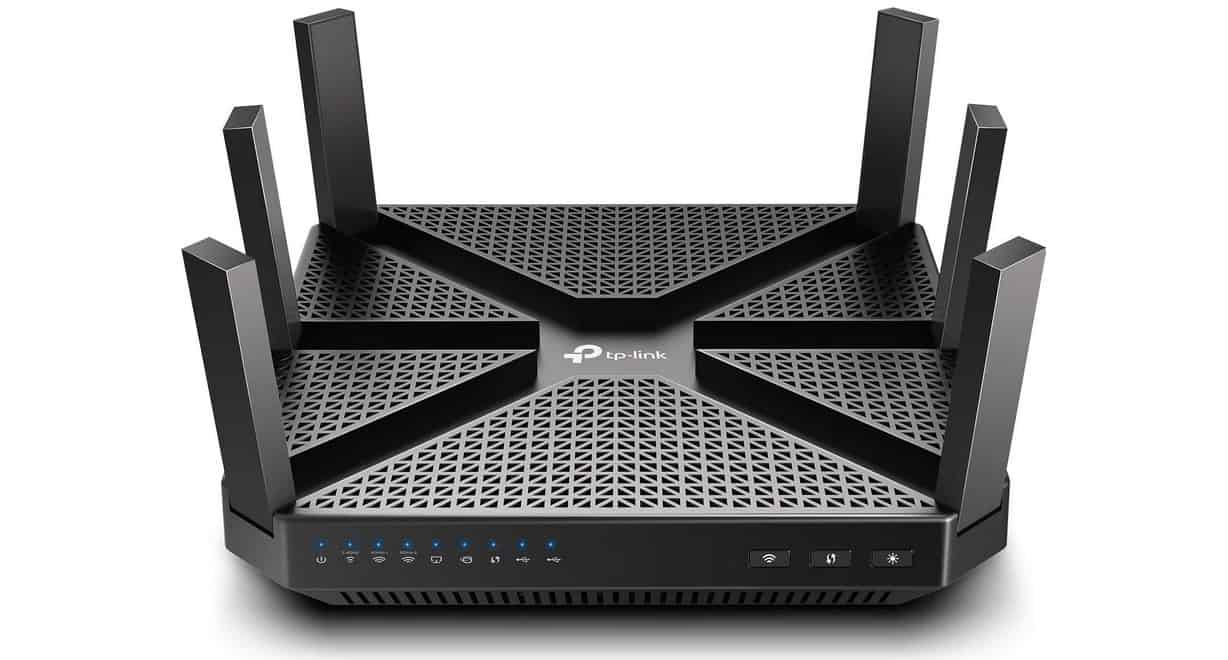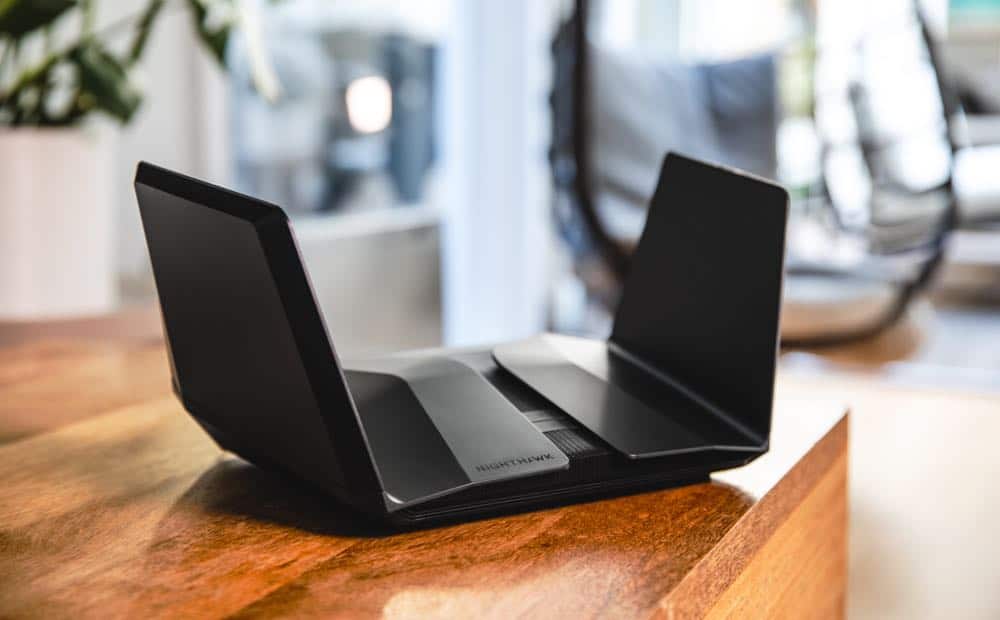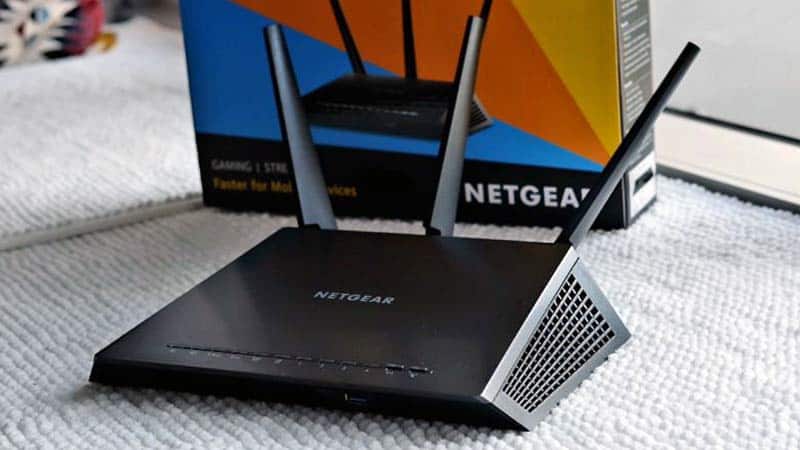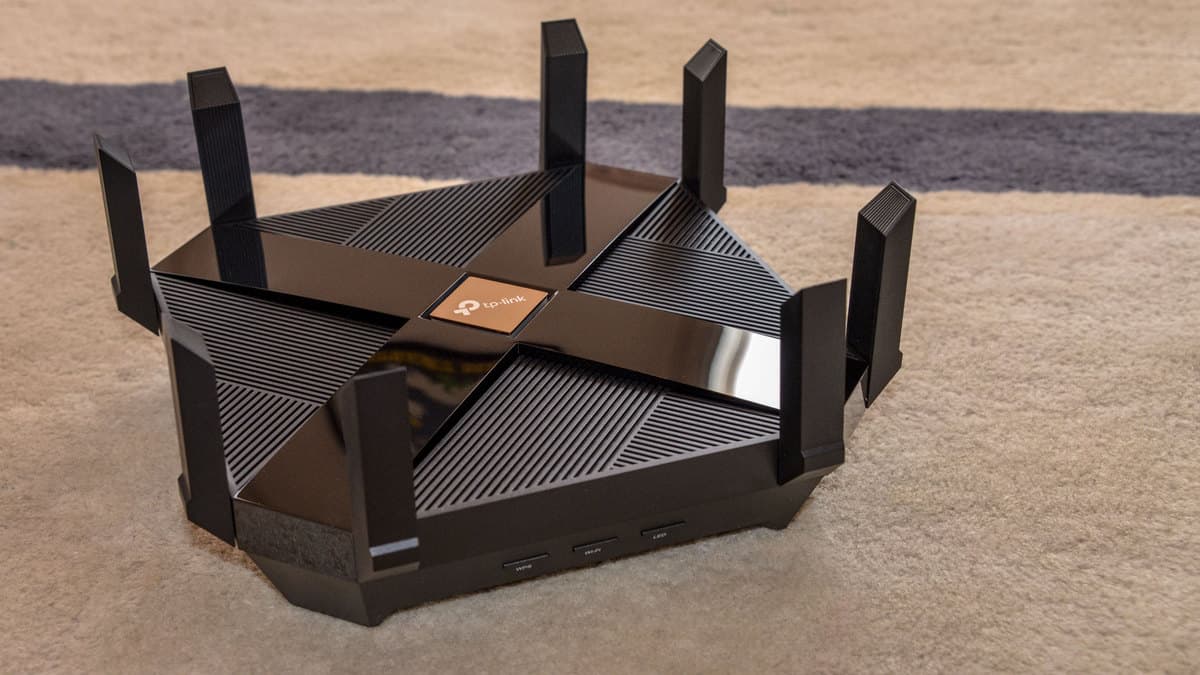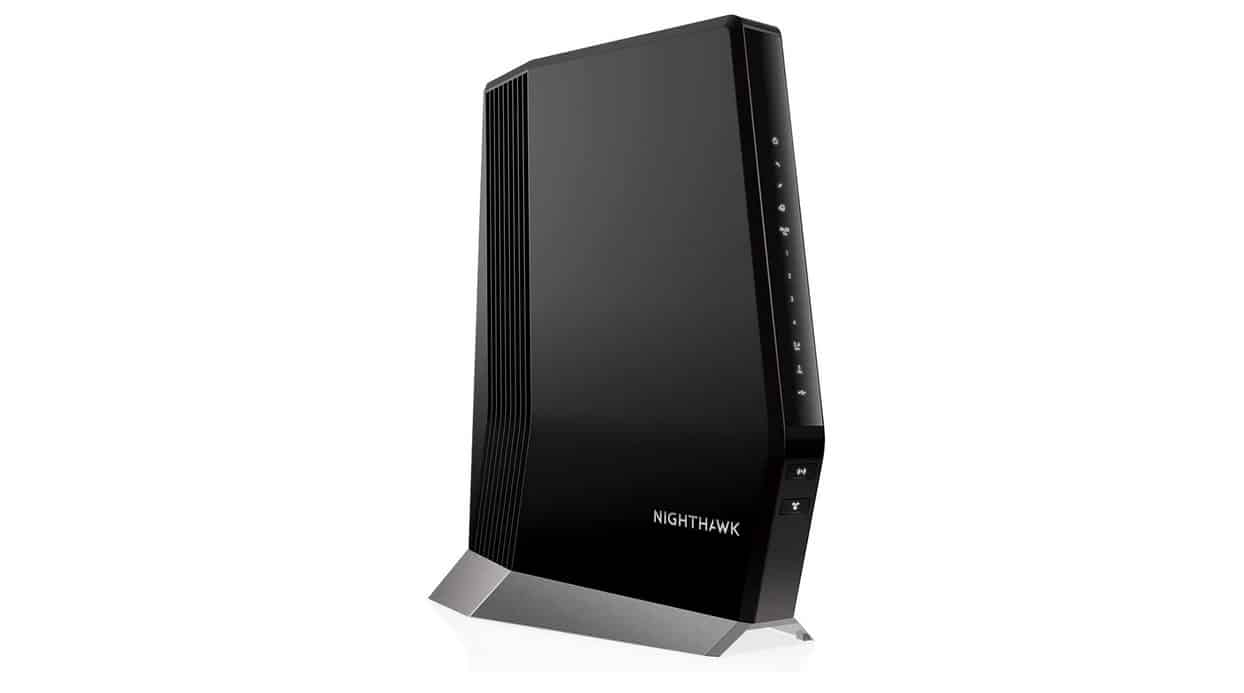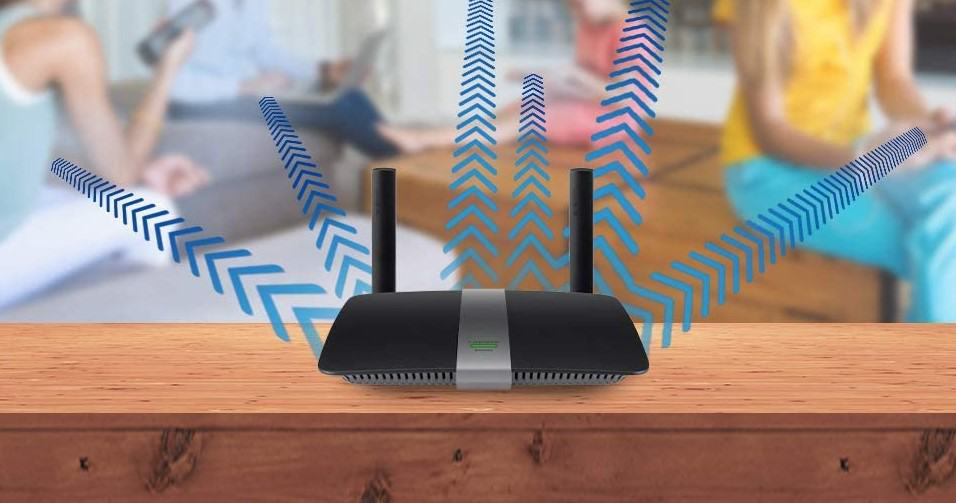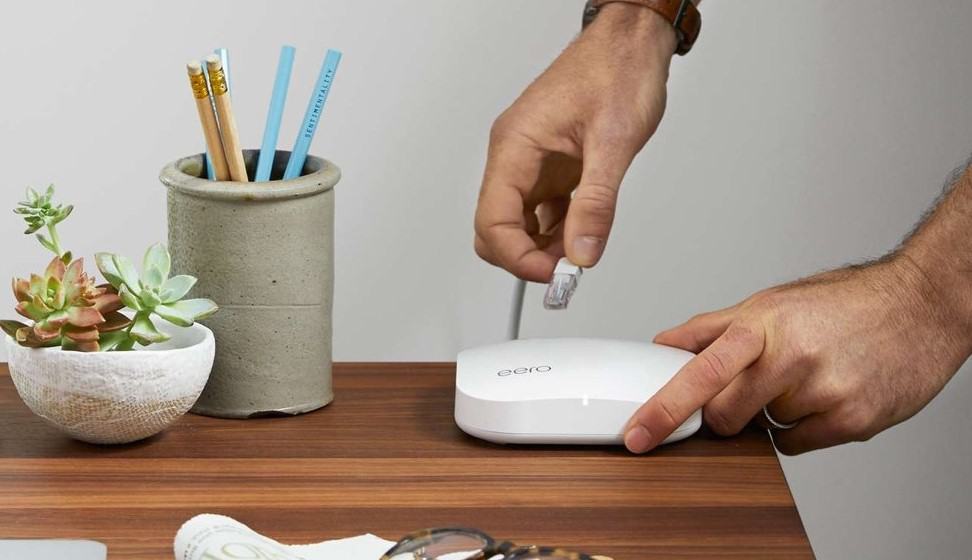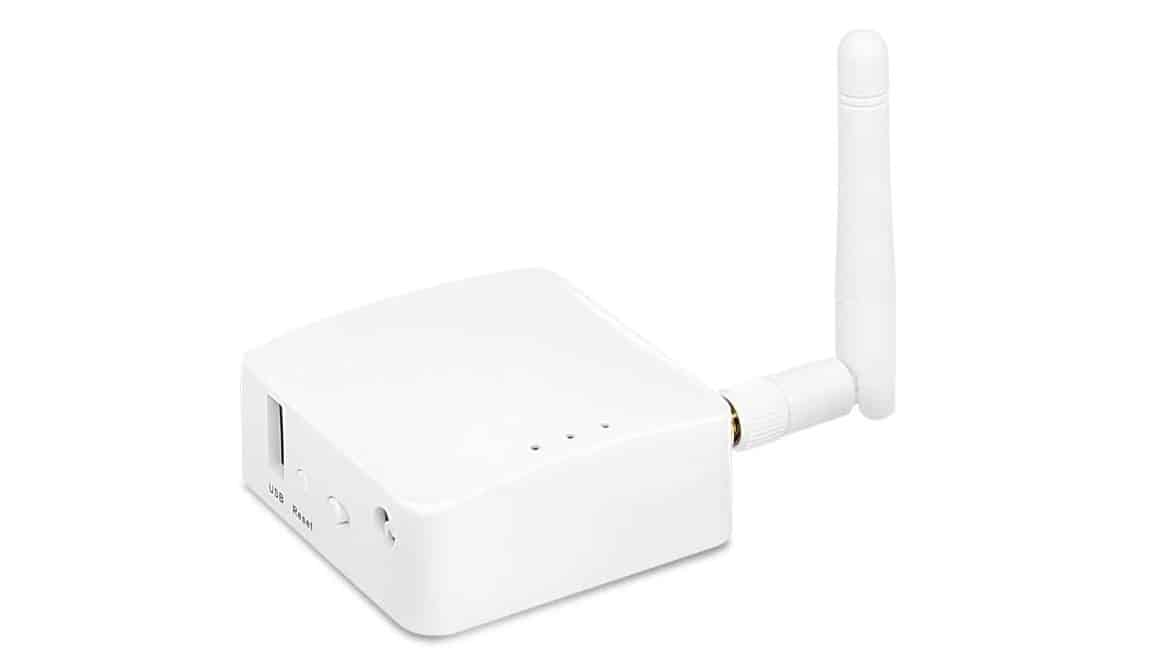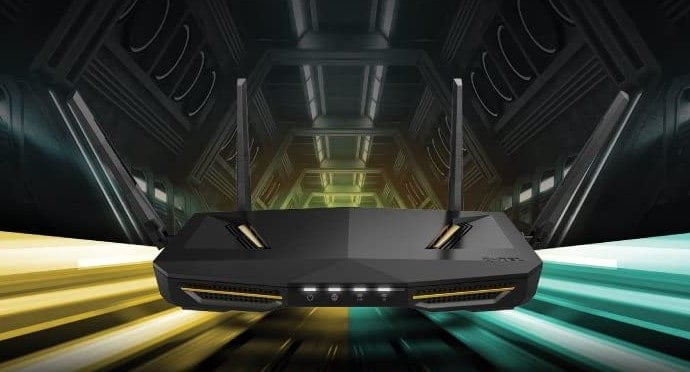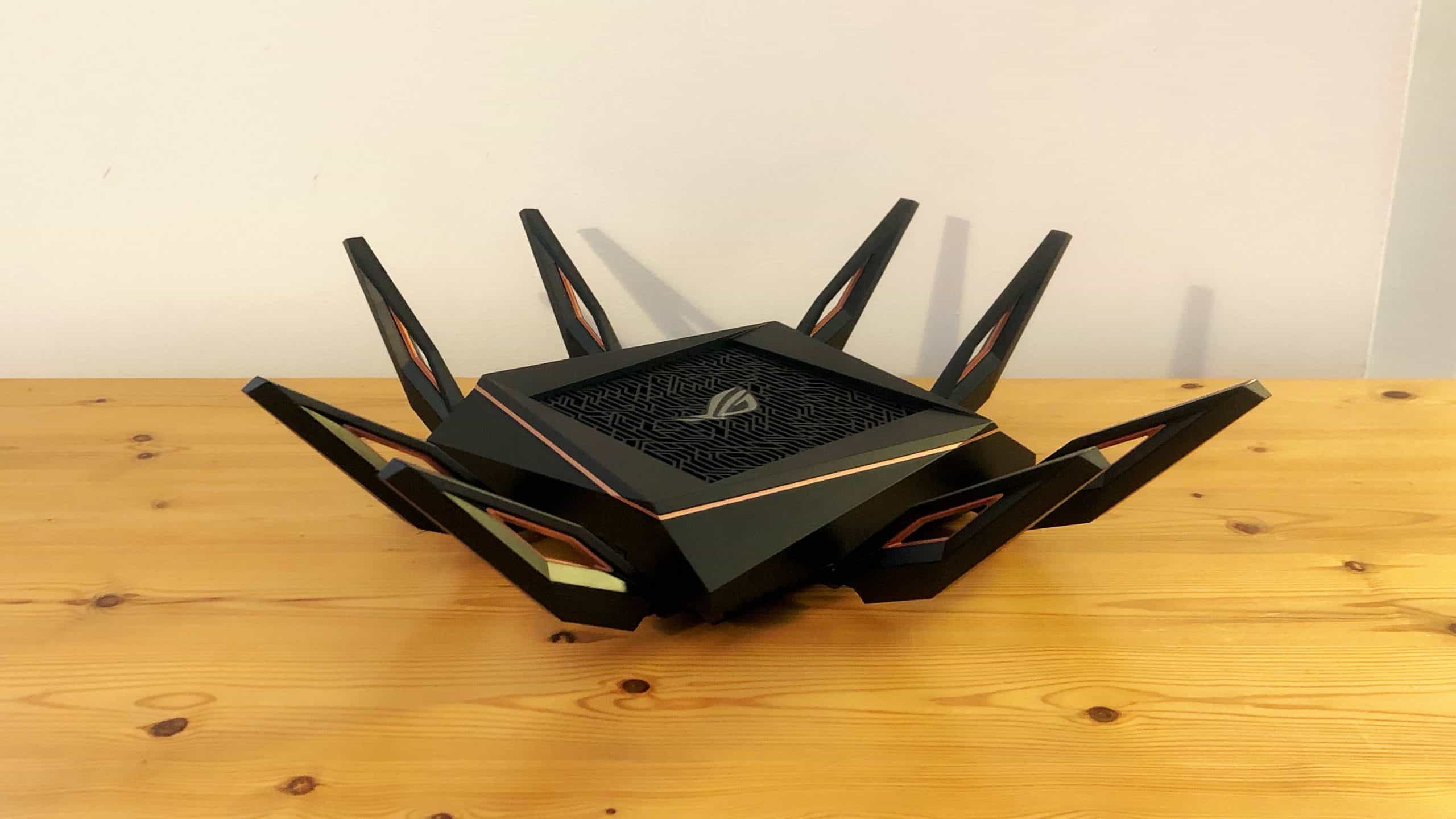What are the features that make the best tri-band router? These powerful networking devices are the best routers for large homes with a lot of devices that need to connect to the internet. Thanks to three separate bands, faster speeds, and more comprehensive coverage, tri-band routers can take your internet experience to the next level.
If you want the latest and greatest Wi-Fi 5, Wi-F 6, or Wi-Fi 6E technology, a tri-band router is the best for you. These are also great for anyone who wants full control over their wireless network, thanks to features like Quality of Service, parental controls, MU-MIMO technology, and extensive security options.
Keep on reading to learn more about the best tri-band routers, how they can enhance your overall wireless experience, and what features you should look for while you’re shopping for a new router.
Top Tri Band Routers
#1 Archer A20 V3 TP-Link AC4000 Tri-Band WiFi Router
Award: TOP PICK
WHY WE LIKE IT: It is ideal for users who prioritize long-range connectivity and rapid connectivity. It can be managed through an app and works seamlessly with Alexa.
- Great range
- Comes with a USB 2.0 and USB 3.0 port
- Signal boosting technologies
- Does not support DDRWT or other firmware
The TP-Link AC4000 is a Tri-Band WiFi router that was rated number 1 for customer satisfaction by J.D Power Rank, meaning it stands up to the manufacturer’s promise of delivering a reliable, high-speed Internet connection. The router is tri-band, so it hosts two separate 5Ghz networks alongside one that has a 2Ghz frequency. Its 5Ghz network supports speeds of up to 1625Mbps, while its 2Ghz network is capped at 750Mbps. It has two USB ports though one supports a USB 2.0 connection while the other is a faster USB 3.0. However, some users might not like its lack of support for DDWRT and other firmware.
It also has five Ethernet ports for flexible wired connectivity and MU-MIMO technology that helps eliminate buffering and allows the router to handle data-heavy activities such as online multiplayer gaming. It also has range boost technology for broader coverage across the home or office and Beamforming for directing WiFi signals to connected devices for stronger connectivity. The router works with Alexa for voice control and comes with an in-built VPN server for secure and encrypted connections.
#2 Asus AX6100 WiFi 6 Gaming Router
Award: HONORABLE MENTION
WHY WE LIKE IT: It has a cybersecurity subscription that is great for preventing malicious attacks and a decent range of connectivity options.
- Great port selection
- Easy setup process
- Includes lifetime cybersecurity protection
- Meshing might have issues for some users
The Asus AX6100 is a top-tier WiFi 6 router that supports AiMesh technology, so users will be able to connect to different routers for improved range and better connectivity. It also comes with a lifetime subscription to AiProtection Pro to keep all the devices connected to it safe from malware and infections and enforce parental controls that would allow them to manage the family’s Internet usage. However, some previous users have reported issues with its meshing.
The router has five Ethernet ports on its rear and two USB ports on its front for added convenience. Its got a data transfer rate of 300 Mbps per second and comes with a mobile app for users who want to manage their app remotely. The app has an easy-to-navigate user interface, making it easy to set up.
#3 Netgear Nighthawk RAX70 8-Stream Tri-band WiFi 6 router
Award: BEST FOR MULTIPLE CONNECTIONS
WHY WE LIKE IT: It supports up to forty different connections and has a wide range. It can be easily managed through the Nighthawk app and comes with a VPN client for data encryption.
- Supports up to forty different devices
- Long range coverage
- Support for voice control
- Gets reset to factory settings after every reboot
The Netgear RAX70 is a wing-shaped router that comes with an impressive 6.6 Gbps WiFi speed courtesy of its support for WiFi 6 technology and support for up to 40 simultaneous connections. It has a healthy coverage of up to 2500 Sq ft, making it ideal for big houses or offices. It also comes with Netgear Armour for protection against viruses, malware, and data theft, and on its back, it has four Ethernet ports that allow for wired connections. However, some users were disappointed that it would lose all its settings after every reboot.
Inside its upright wing-like flaps, the router has six antennas for good range. Since it can also be configured through the Nighthawk app, users will also be able to monitor online activity, set up smart parental controls, and conduct speed tests to find out how fast their connection is. The router also allows for up to 8 continuous streams and has MU-MIMO technology for locking in a signal to a connected device. Connections can also be encrypted through its onboard VPN client, and with support for Amazon Alexa and Google Assistant integration, users will also be able to use their voice for control.
#4 Linksys EA9500 AC5400 WiFi 5 Router
Award: BEST FOR WIRED CONNECTIONS
WHY WE LIKE IT: It has eight Ethernet and two USB ports, making it ideal for wired connections. Data transfer speeds are rapid, and it has impressive range.
- Great for wired connections
- Rapid data transfer speeds
- Long coverage
- Some previous users felt its software was too buggy
The LinkSys EA9500 is a reliable Tri-band router that offers coverage of 3000 Sq ft and can handle connections from 25 to 25 wireless devices. The router is also well equipped to handle wired connections, as it has eight Ethernet ports and two USB connections. Connectivity is fast since its Tri-band network configuration allows for WiFi speeds of up to 5.3 Gbps. Unfortunately, some previous users felt that its software was too buggy.
The router is very easy to set up and has eight antennas that allow it to deliver four data streams on each of its three bands for more reliable connectivity. It also has a duo-core processor for more efficient running and features Beamforming technology where it focuses signals on a connected device for more efficient functioning. The router can be controlled through an app, and through its MU MIMO technology, it can provide Wi-Fi to multiple devices at the same speed.
#5 Meshforce M7 Tri-Band Whole Home Mesh WiFi System
Award: BEST FOR LONG RANGE
WHY WE LIKE IT: It is perfect for users that live or work in big spaces and need reliable connectivity across different floors. It also has a dedicated firewall and parental controls courtesy of its app.
- Has outstanding range
- Can support up to 75 devices
- Connects to the fastest and least crowded network
- Some might find its app not user friendly
The Meshforce M7 is a collection of three different mesh routers with a combined range of up to 6000 Sq ft. For the best user experience, owners will have to download the My Mesh app, as this allows for a more seamless setup procedure as well as support for a Guest WiFi network. Users will also be able to use parental controls to monitor what sites their kids are browsing and limit access to inappropriate content. Unfortunately, some people had a serious issue with the app, as they felt that its user interface was not user-friendly.
This tri-band mesh router can handle connections for up to 75 different devices, and it does so without compromising signal strength or stability. It also comes with a built-in firewall for added security and supports the creation of a guest network for one-off connections.
#6 Gryphon AC300 Parental Control Router & Mesh WiFi System
Award: BEST FOR NETWORK SAFETY
WHY WE LIKE IT: It comes with enhanced network safety features and has a rapid data transfer rate. The router has comprehensive coverage and its app is easy to navigate.
- Great security features
- Rapid data transfer rate of up to 3 Gbps
- Easy to navigate app
- No USB port
The Gryphon AC300 router comes with a super-fast 3 Gbps overall throughput and supports a Tri-band connectivity where users can have their devices connect to the fastest network. The router boasts a data transfer rate of up to 3 Gigabits per second, and since it comes with Intrusion and Malware Home Protection for all users, their devices will get periodically scanned also remain safe from malicious sites and viruses. However, it does not have a USB port.
Most users will be inclined to download the Gryphon app for limiting access to certain sites and exercising other parental control features. The router also comes with up to 6 different antennas and has a total of four Ethernet ports. A single Gryphon router should be enough for coverage through up to 3000 Sq ft, and since it comes with Beamforming technology, connected devices will be able to maintain the same signal strength and stability even when moving around.
What Are Tri-Band Routers?
A tri-band router is a piece of networking hardware that creates a wireless network in your home or office space. These handy devices are essential for any connected home or business. Tri-band routers connect to a modem through the use of an Ethernet cable and Ethernet port and translate the internet signal coming from the modem into a wireless signal for other devices to use.
Once devices are connected, the router can interpret and manage internet traffic, prioritizing more important devices and managing speeds. Tri-band routers also produce three different wireless frequencies, which allows more devices to connect without slowing down your internet speed.
Tri-Band Routers vs Traditional Routers
Have you ever seen a Wi-Fi router that looks like it came from an alien mothership with all of its hard angles and a multitude of antennas? If you have, you were most likely looking at a tri-band router. When it comes to design and form factor, these routers are much different than a single-band router or dual-band router. In order to produce three separate wireless signals, tri-band routers need larger internal components and more antennas.
While the core concepts of a router’s functionality don’t differ much between varying types of routers, a tri-band option simply takes it to the next level. Instead of offering a single wireless frequency, or two for that matter, a tri-band Wi-Fi router offers three.
The three bands these routers offer are a 2.4 GHz band and two 5 GHz bands. The 2.4 GHz band provides broad compatibility with a wide range of devices and a lot of range, but less speed. The 5 GHz band offers more speed and a more consistent wireless connection, but less range overall.
Tri-band routers also tend to offer more advanced features and more extensive customizability than other kinds of routers. Since these networking devices typically need to handle more traffic and more devices connected simultaneously, they need to offer more admin settings.
How Tri-Band Routers Work
Optimum routers don’t offer anything revolutionary or different from other routers when it comes to standard operating functionality. These routers require a power source — usually a wall outlet — and a connection to a cable modem. After installation and initial configuration, the routers will produce a wireless signal for your other devices. You’ll also get the option to hook your devices directly into the router through USB ports and Ethernet ports.
An Optimum router doesn’t sit back and relax after your devices get onto the network. As their name implies, network routers will actually route traffic back and forth to your devices. They’ll even prioritize traffic and protect your data behind the scenes.
Do You Really Need a Tri-Band Router?
Are you looking for the latest and greatest in networking technology? Do you have a ton of devices at home that need to all be connected at the same time? Maybe you’re looking to get into smart home technology and need a more reliable network than the standard home. All of these are good reasons to consider a tri-band wireless router.
Is a Tri-Band Router Worth Buying?
- You Need to Maximize Your Wi-Fi Network’s Performance: Tri-band routers offer the best when it comes to wireless network performance and speed. If you have fast download speeds that you want to completely harness, then a tri-band router can help. Most options can handle higher combined speeds and feature Wi-Fi 6 compatibility, making them perfect 4K streaming and gaming routers
- You Connect A Lot of Devices to Wi-Fi Simultaneously: If you have a ton of wireless or mobile devices in your home that utilize Wi-Fi, then you can’t afford to pass up a tri-band router. With built-in Quality of Service (QoS) functionality and three separate wireless bands, you’ll be able to keep all of your devices connected without experiencing huge drops in speed or coverage.
- You Need Wi-Fi Coverage for a Large Space: Most tri-band routers offer a ton of range, which is perfect for large homes and office spaces. Plus, if you still don’t get enough range with a single tri-band router, most of these devices give you the option of creating a mesh network by combining multiple routers. This can help eliminate dead spots in your internet coverage.
- You Use a Leading Internet Service Provider: The top ISPs often offer the highest speeds and most reliable experience. As such, tri-band routers often make for the best routers for Xfinity and other top ISPs.
Why a Tri-Band Router May Not Be For You
- You Need Wi-Fi Coverage for a Small Space: If you don’t need wireless coverage across a large space, then a tri-band router might be overkill for you. Either a single-band or dual-band router is usually better for smaller spaces.
- You Only Connect a Few Devices to Your Network: Tri-band routers are best for homes with lots of devices (20 or more) that need to use the internet. If you only have five to ten devices that need to connect, you’re probably better off finding a smaller router.
- You’re On a Tight Budget: These routers are among the most expensive available on the market today. If you’re on a tight budget, you’ll likely want to consider something more affordable than a tri-band router.
How Long Will a Tri-Band Router Last?
Since most wireless routers don’t have any kind of moving internal components, they could theoretically last forever with the proper maintenance and care. Tri-band routers tend to have a litany of different antennas that can be removed and adjusted, so these portions may wear out faster if you’re constantly fiddling with them. However, in general, a router should be able to last a long time purely in terms of mechanical quality.
The question then becomes how long a router can keep up with the constant change of technology. Internet technology is constantly evolving, which quickly renders existing networking equipment outdated more often than you might expect.
This is why most pros in the industry, like those at Network World, state you should expect four or five good years out of your router before you need to update it. However, tri-band routers tend to offer the most advanced features and functionality, so you’ll likely get a little longer out of these devices before needing to upgrade to the latest and greatest.
How to Choose a Tri-Band Router
Before spending a lot of money on a new tri-band router, you’ll want to be sure you understand your exact networking needs so you can find a model that matches those needs. When it comes to tri-band options, you’ll want to be sure you find a model that offers the appropriate range for your space and enough speed capacity to handle the speeds you’re getting from your internet service provider (ISP). You should also consider what kind of security, parental control, and customization options you need.
Best Tri-Band Router Key Factors to Consider
1. How much speed does your internet plan provide?
With a new tri-band router, you’ll be able to harness the full performance that your internet plan allows, but only if you purchase a device rated for those speeds. As such, you’ll first want to determine exactly how much speed your plan provides. If you don’t already know how much speed you’re getting, you can typically find that information on your bill or by calling your ISP’s customer service line.
Once you know how much speed you’re getting from your ISP, you’ll want to find a router that can handle as much of, if not more than, that speed. For example, if you’re paying for a 500 Mbps internet plan, you’ll want to purchase a router that can handle 500 Mbps at a minimum. We recommend purchasing a tri-band router that can handle more speed than what you currently get, in case you ever want to upgrade your plan.
2. Which wireless internet protocols should your tri-band router use?
Most wireless routers use a wireless protocol called 802.11ac. At a bare minimum, you’ll want to get a router that supports this protocol. You can find these routers by looking for the AC label in their model number (e.g., AC2000, AC1750, etc.). An 802.11ac router will provide most of the features and functionality that you need.
There is also a newer wireless protocol to consider, 802.11ax. Similarly to AC routers, these wireless routers feature an AX label in their model numbers. AX routers can create Wi-Fi 6 networks, which provide faster throughput speeds, less network congestion, and better performance at longer ranges.
The latest and greatest Wi-Fi routers are also starting to offer Wi-Fi 6E, which supports a 6 GHz band. These are few and far between, though, and they offer the highest price tags of all. To get the best experience, we recommend purchasing an 802.11ax tri-band router to get Wi-Fi 6 capabilities and better network performance overall.
3. What physical connectivity options should your tri-band router feature?
Wireless routers are, of course, most used for their wireless capabilities, but it’s also important to consider what kind of physical connectivity options your router provides. With wired connections, you can create an even more reliable internet experience for wired devices like gaming consoles, computers, and streaming boxes.
Consider these connectivity options while shopping for a new tri-band router:
- Gigabit Ethernet Ports: We recommend only purchasing a router if it offers at least four gigabit Ethernet ports. This allows you to connect wired devices like smart home hubs, desktop computers, and network storage drives.
- USB Ports: A router with more than one USB port allows you to connect devices like network printers with ease.
- Removable Antennas: We recommend finding a router with removable antennas so you can easily swap them out on your own, if necessary. This way, you won’t need to send the router to the manufacturer for costly repairs.
4. What kind of security features do you need on your tri-band router?
Your wireless router is one of the first lines of defense against external threats. To protect your devices and data, you’ll want to purchase a tri-band router with at least WPA2 encryption standard, SSID capabilities, and built-in antivirus software.
Another important feature to consider is parental control options, especially if you have children in your home. With parental controls, you can adjust your router to only allow certain devices to access certain websites. You can also monitor all traffic and set schedules for devices.
You may also want to consider a router that gives you the option of creating a virtual private network (VPN) or virtual LAN (VLAN) capabilities. These are advanced security functions that require a bit more technical know-how, but they are well worth it when considering the additional security benefits.
5. What advanced features and customization should you consider for your tri-band router?
Most tri-band routers offer a number of advanced features and functionalities, each with a different purpose. Take a look at the following options to determine which are best for your networking needs:
- Quality of Service (QoS): This feature allows you to prioritize certain connected devices over others. These devices will get the fastest speeds and most reliable signal strength.
- Mesh Network: With mesh networking capabilities, you can combine several routers to create a network that eliminates dead zones.
- Guest Network: A router with guest network functionality allows you to create a separate network with protected features. This way, you can allow your guests to connect to Wi-Fi without compromising your internal data.
- MU-MIMO Technology: Most tri-band routers feature MU-MIMO technology, which stands for multi-user, multiple input, multiple output. Simply put, MU-MIMO enables multiple devices to connect simultaneously without losing signal strength or decreasing speed.

![Best Tri Band Routers in [year] 1 best tri band router](https://www.gadgetreview.dev/wp-content/uploads/best-tri-band-router-image.jpg)


![Best Tri Band Routers in [year] 2 TP-Link AC4000 Tri-Band WiFi Router (Archer A20)...](https://m.media-amazon.com/images/I/41+jQiDxQQL._SL160_.jpg)
![Best Tri Band Routers in [year] 3 ASUS AX6100 WiFi 6 Gaming Router (RT-AX92U) - Tri-Band...](https://m.media-amazon.com/images/I/41Djfzf1ciL._SL160_.jpg)
![Best Tri Band Routers in [year] 4 NETGEAR Nighthawk 8-Stream WiFi 6 Router (RAX70) -...](https://m.media-amazon.com/images/I/31oCsHRnP4L._SL160_.jpg)
![Best Tri Band Routers in [year] 10 Our #4 Pick is the Linksys EA9500 AC5400 WiFi 5 Router](https://m.media-amazon.com/images/I/51hhUAoPmHL._SL160_.jpg)
![Best Tri Band Routers in [year] 11 Our #5 Pick is the Meshforce M7 Tri-Band Whole Home Mesh WiFi System](https://m.media-amazon.com/images/I/31iN4LYQifL._SL160_.jpg)
![Best Tri Band Routers in [year] 12 Our #6 Pick is the Gryphon AC300 Parental Control Router & Mesh WiFi System](https://m.media-amazon.com/images/I/11RfLwTgUsL._SL160_.jpg)


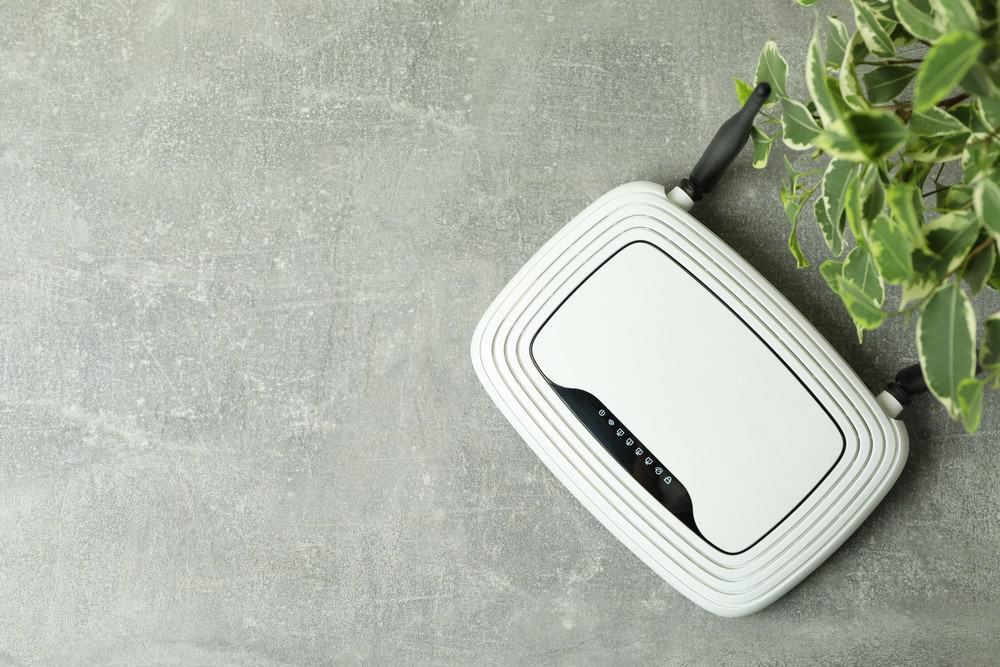
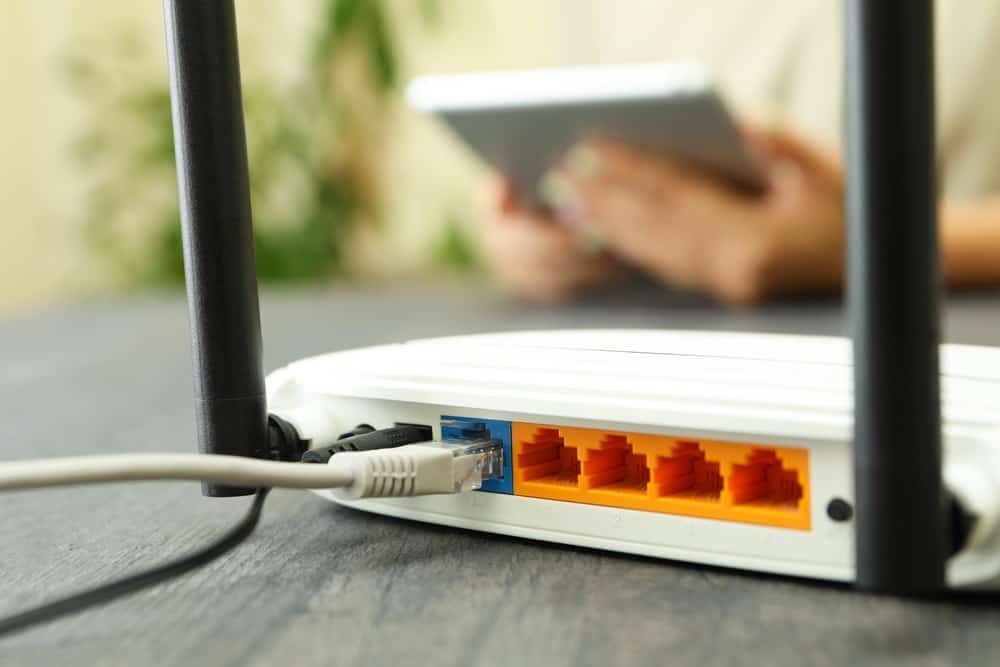
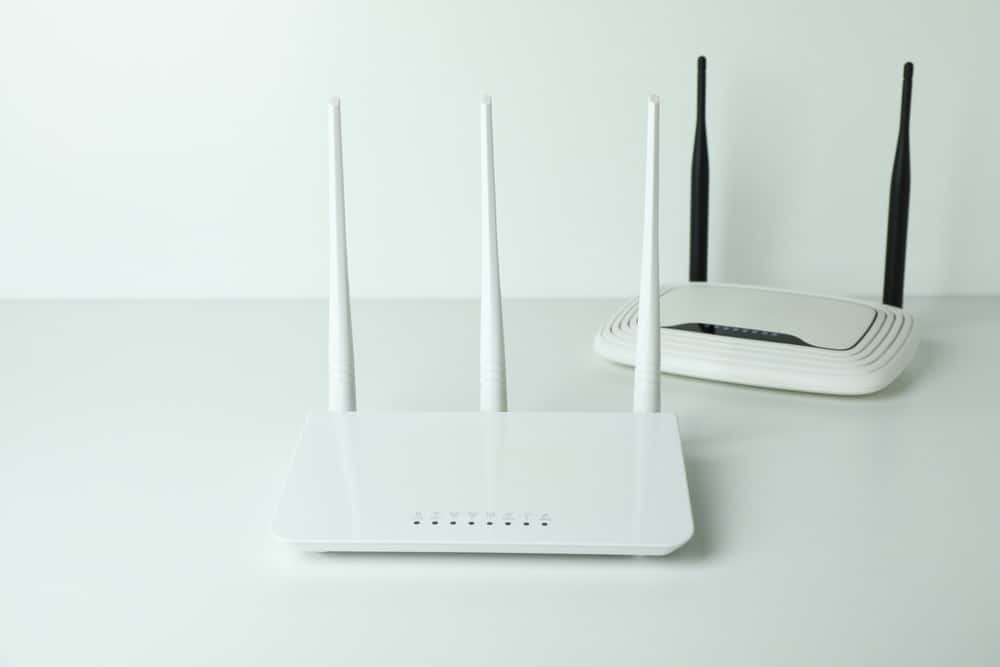

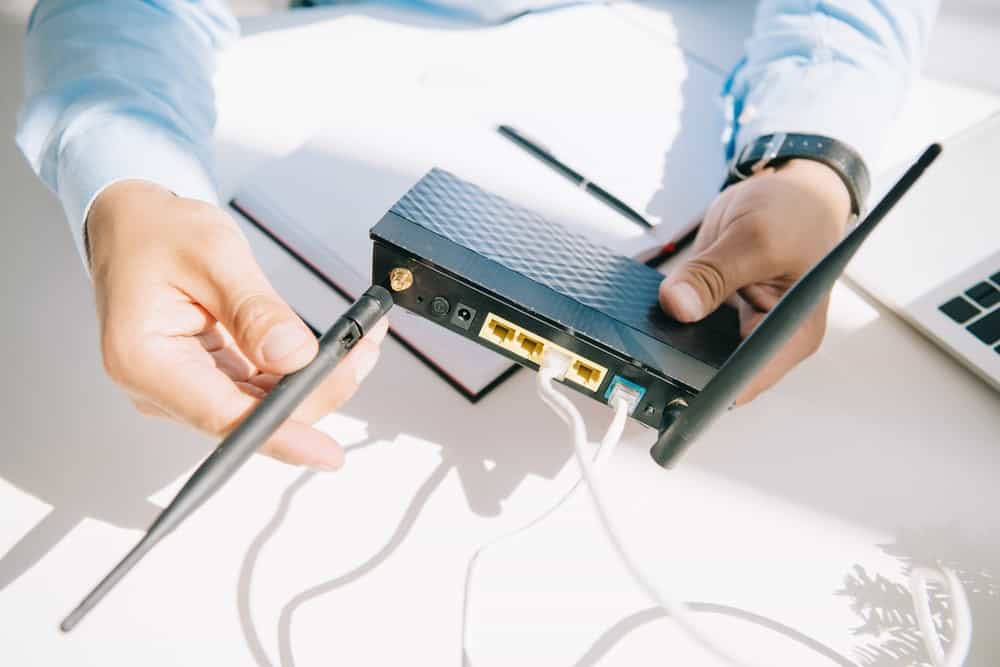
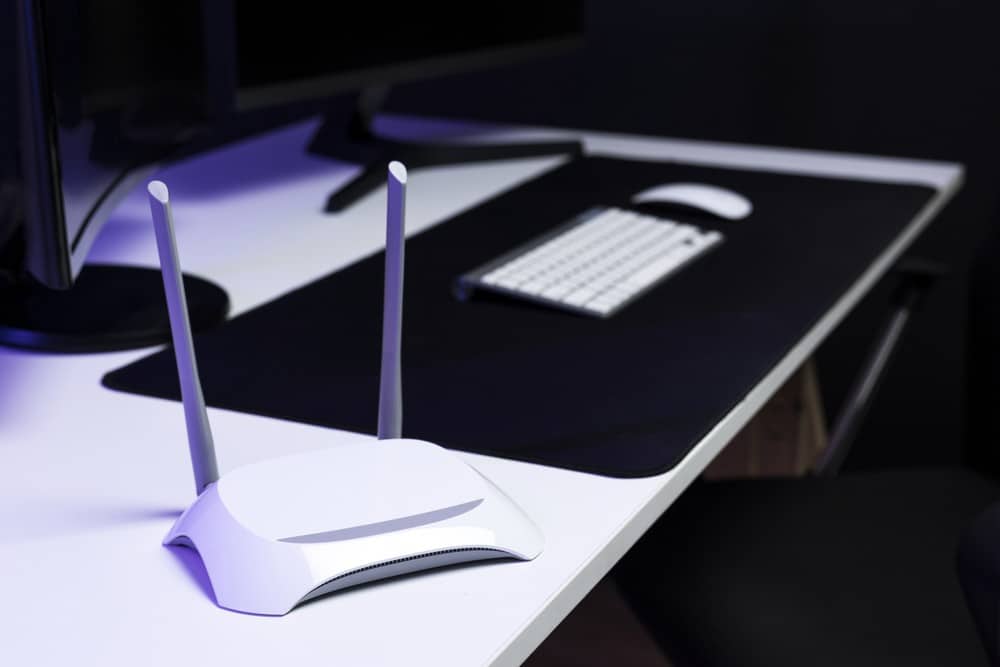


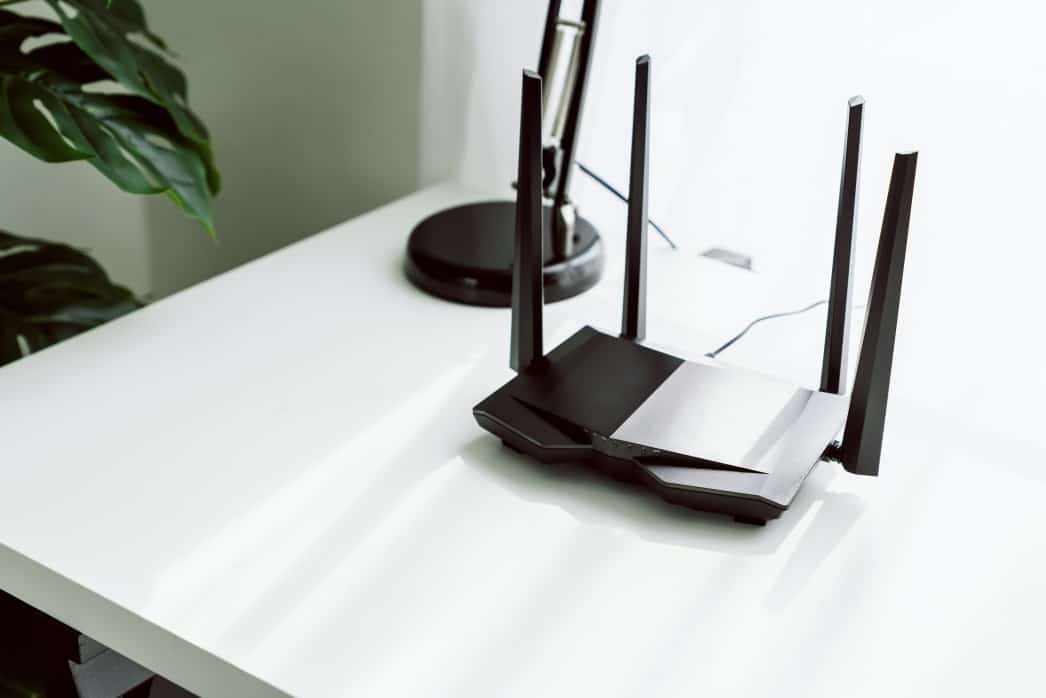
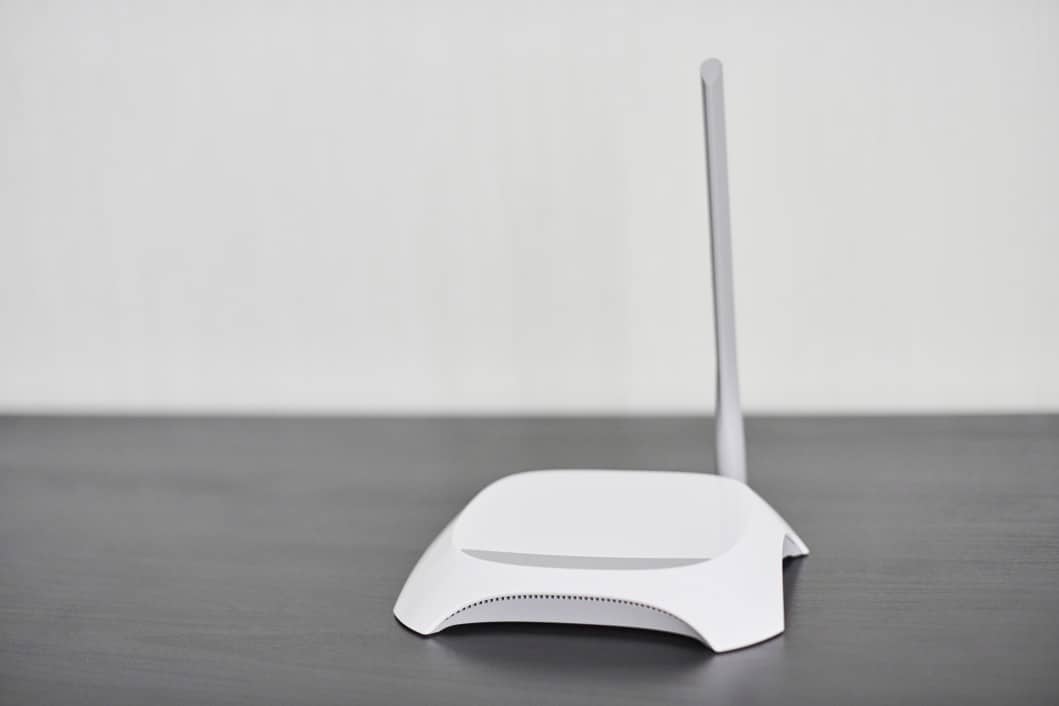
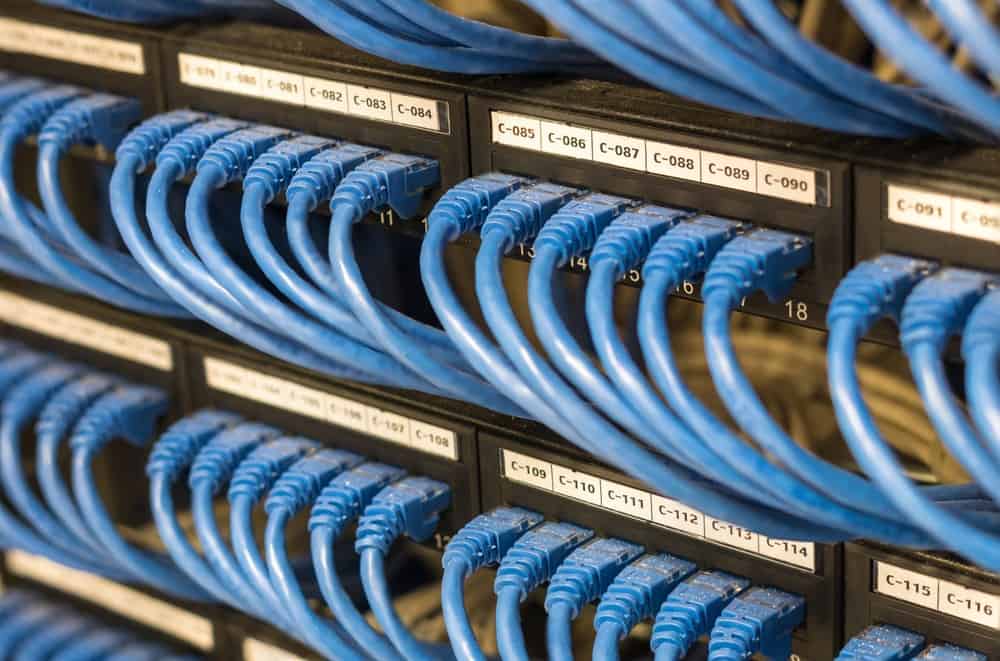
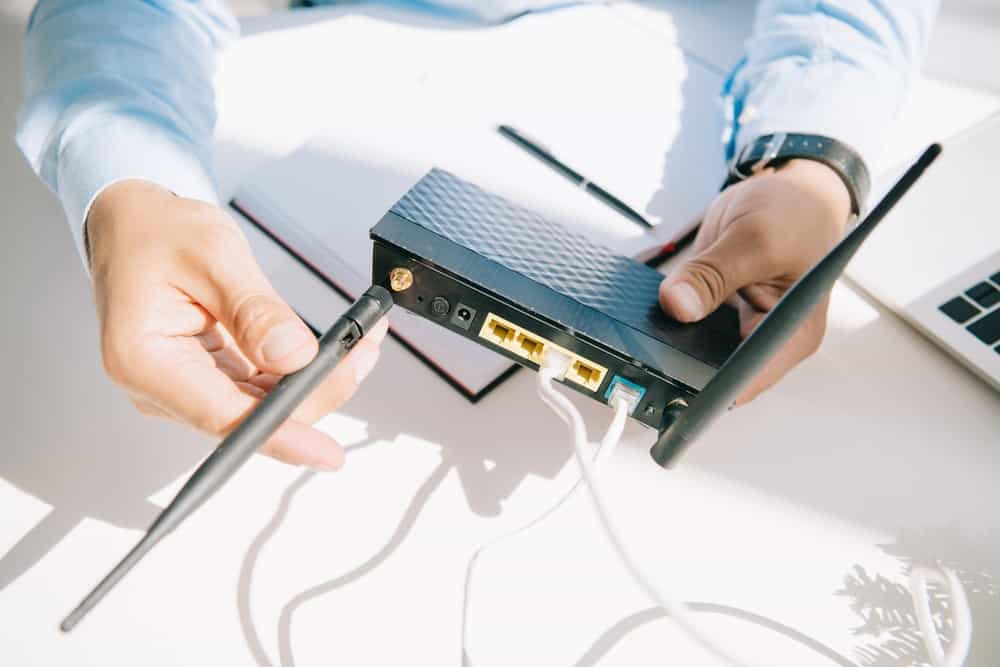

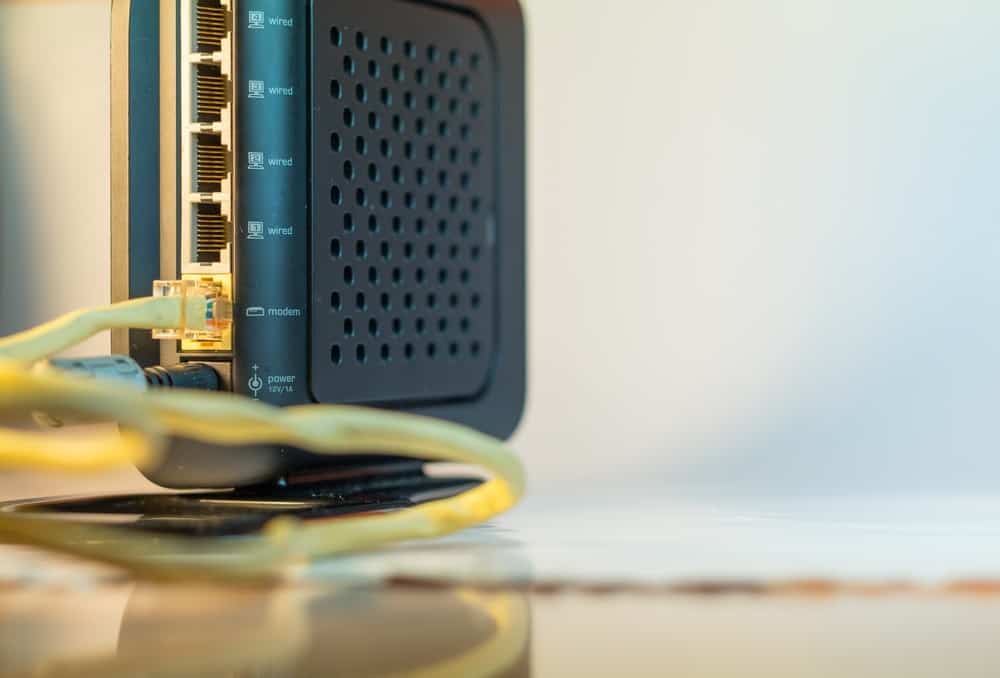

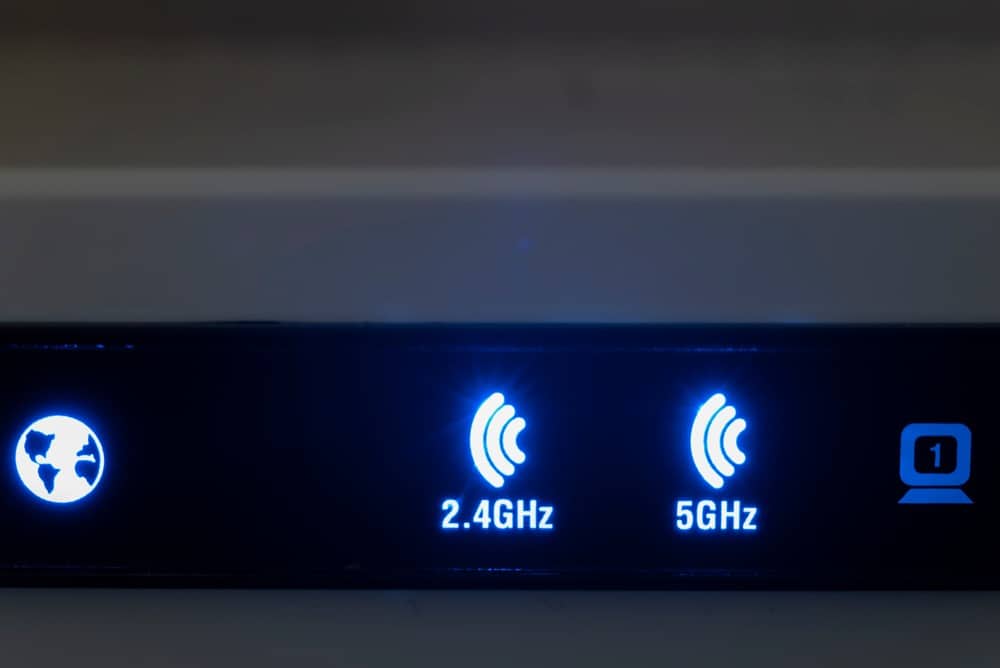

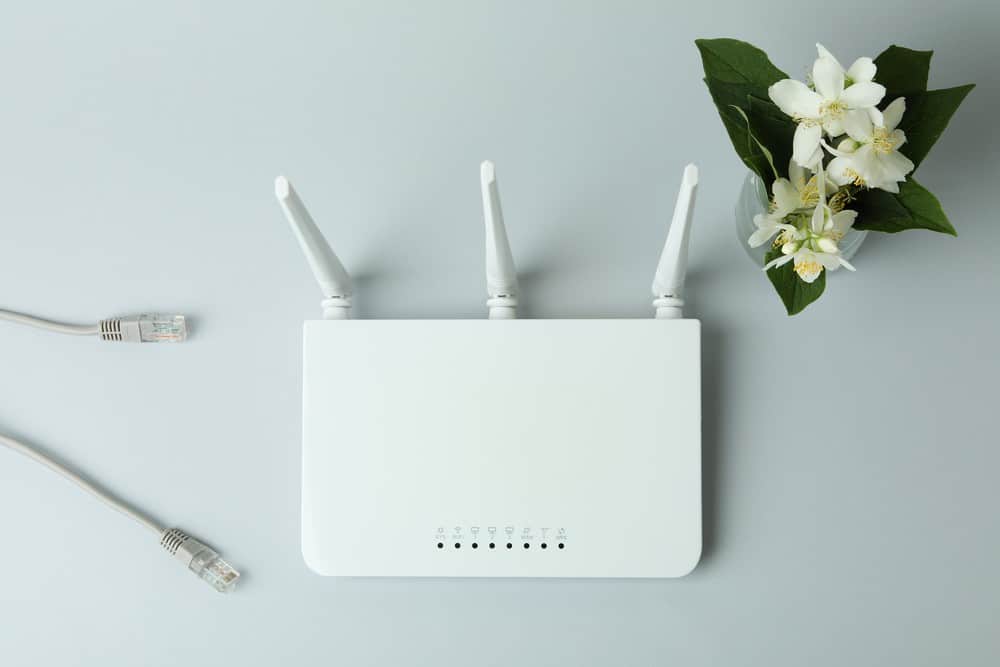
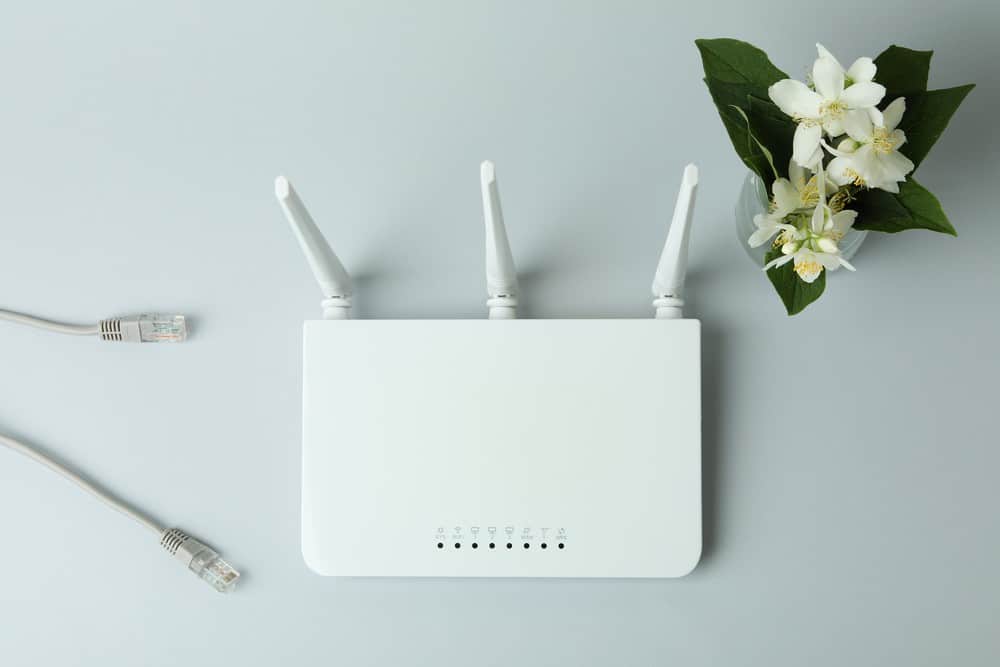

![Best BenQ Monitors in [year] 33 Best BenQ Monitors in 2026](https://www.gadgetreview.dev/wp-content/uploads/best-benq-monitor-image.jpg)
![Best Wifi Extenders For FiOS in [year] 34 Best Wifi Extenders For FiOS in 2026](https://www.gadgetreview.dev/wp-content/uploads/best-wifi-extender-for-fios-image.jpg)
![Best Fiber Optic Routers in [year] 35 Best Fiber Optic Routers in 2026](https://www.gadgetreview.dev/wp-content/uploads/best-fiber-optic-router-image.jpg)
![Best VoIP Routers in [year] 36 Best VoIP Routers in 2026](https://www.gadgetreview.dev/wp-content/uploads/best-voip-router-image.jpg)
![Best Routers for 200Mbps in [year] 37 Best Routers for 200Mbps in 2026](https://www.gadgetreview.dev/wp-content/uploads/best-router-for-200mbps-image.jpg)
![Best Routers for Optimum in [year] 38 Best Routers for Optimum in 2026](https://www.gadgetreview.dev/wp-content/uploads/best-router-for-optimum-image.jpg)
![Best Routers for Apple in [year] 39 Best Routers for Apple in 2026](https://www.gadgetreview.dev/wp-content/uploads/best-router-for-apple-image.jpg)
![Best Routers for Frontier FIOS in [year] 40 Best Routers for Frontier FIOS in 2026](https://www.gadgetreview.dev/wp-content/uploads/best-router-for-frontier-fios-image.jpg)
![Best Secure Routers in [year] 41 Best Secure Routers in 2026](https://www.gadgetreview.dev/wp-content/uploads/best-secure-router-image.jpg)
![Best Routers for Google Fiber in [year] 42 Best Routers for Google Fiber in 2026](https://www.gadgetreview.dev/wp-content/uploads/best-router-for-google-fiber-image.jpg)
![Best Routers for Cox in [year] 43 Best Routers for Cox in 2026](https://www.gadgetreview.dev/wp-content/uploads/best-router-for-cox-image.jpg)
![Best Asus Routers in [year] 44 Best Asus Routers in 2026](https://www.gadgetreview.dev/wp-content/uploads/best-asus-routers-image.jpg)
![Best Linksys Routers in [year] 45 Best Linksys Routers in 2026](https://www.gadgetreview.dev/wp-content/uploads/best-linksys-routers-image.jpg)
![Best Routers for CenturyLink in [year] 46 Best Routers for CenturyLink in 2026](https://www.gadgetreview.dev/wp-content/uploads/best-router-for-centurylink-image.jpg)
![Best WiFi Routers for Multiple Devices in [year] 47 Best WiFi Routers for Multiple Devices in 2026](https://www.gadgetreview.dev/wp-content/uploads/best-wifi-router-for-multiple-devices-image.jpg)
![Best Wired Routers in [year] 48 Best Wired Routers in 2026](https://www.gadgetreview.dev/wp-content/uploads/best-wired-router-image.jpg)
![Best Routers for 4K Streaming in [year] 49 Best Routers for 4K Streaming in 2026](https://www.gadgetreview.dev/wp-content/uploads/best-router-for-4k-streaming-image.jpg)
![Best Cisco Routers in [year] 50 Best Cisco Routers in 2026](https://www.gadgetreview.dev/wp-content/uploads/best-cisco-routers-image.jpg)
![Best eero Routers in [year] 51 Best eero Routers in 2026](https://www.gadgetreview.dev/wp-content/uploads/best-eero-routers-image.jpg)






